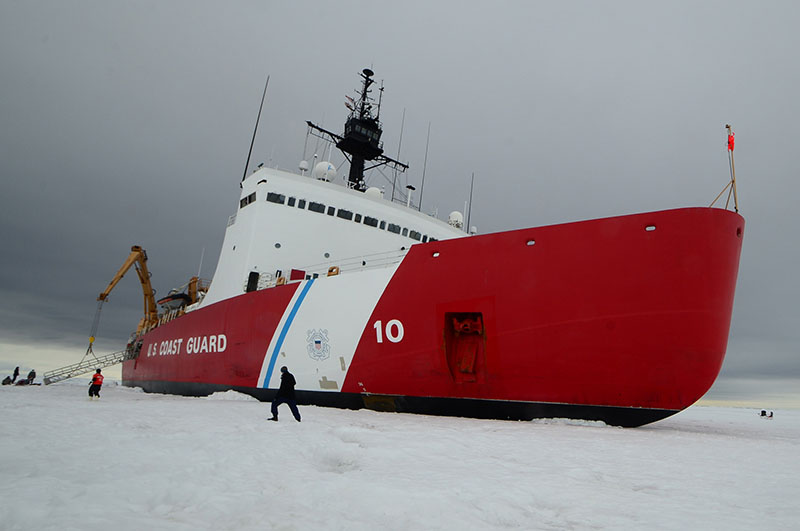Bob Shortridge has a problem. ItŌĆÖs best summed up by an encounter he had with someone who, after listening to ShortridgeŌĆÖs product pitch, said, ŌĆ£Wait a minute. How do I go to my boss and say, ŌĆśBoss have I got an idea for you. You need to put wood bearings in your several million dollar boat.ŌĆÖ Help me out here.ŌĆØ
The wood heŌĆÖs referring to is lignum vitae and ShortridgeŌĆÖs company, appropriately named Lignum-Vitae, was trying to sell him on the notion of converting to lignum vitae bearings.
According to Shortridge, ŌĆ£itŌĆÖs a better shaft bearing than anything else available.ŌĆØ
ThatŌĆÖs a hard sell. Sure, lignum vitae was used for deadeyes and as sheaves in blocks on sailing ships in the 1700s, but today itŌĆÖs metal shafts turning at incredibly high rates of speed. Can wood stand up to that kind of service?
Well, what Shortridge will tell you is that it has in the past, so why not now? After all, lignum vitae was the material used in an 1853 patent for the first successful stern tube bearing. It was the bearing of choice for the icebreakers Polar Star and Polar Sea. The first nuclear submarine, the Nautilus, used lignum vitae in its shaft strut bearings.
Then thereŌĆÖs a quote on the Lignum-Vitae website from a 1929 United States Naval Institute article: ŌĆ£The propeller shaft of every battleship, every destroyer, every transport, in fact every large steamship, revolves in a wooden bearing at the stern end.ŌĆØ
Lignum vitae, which is native to trees found in the Caribbean and the North Coast of South America, worked so well in those vessels because itŌĆÖs the densest and hardest wood available. Friction is low, and the wood is self-lubricating. That seems to make it a perfect candidate for long-lasting water-lubricated bearings that would eliminate potential EPA lawsuits for oil spills.
So why do people scratch their heads today when the idea of using lignum vitae is brought up? That goes back to WWII when ŌĆ£lignum vitae was the bearing of choice,ŌĆØ Shortridge said. ŌĆ£The Navy was trying to save brass, lead, and grease and they put lignum vitae in every submarine, aircraft carrier and warship they had.ŌĆØ
That used up a lot of trees and resulted in a scarcity of the wood after the war. At the same time, Shortridge said, ŌĆ£plastics and composites came to the forefront,ŌĆØ as replacement materials. Today, 70-some years after the end of WWII, lignum vitae forests have replenished, but itŌĆÖs safe to say that boat owners, maintenance crews and boatyards are not familiar with the material. ThatŌĆÖs why Shortridge is making a push to educate the marine industry on its use.
ItŌĆÖs not the first time heŌĆÖs faced that education challenge. The company Lignum-Vitae is seven years old. Only in the past year has it been working to sell their product to the marine market. Prior to that the focus was the hydroelectric industry. It wasnŌĆÖt an easy sell as he was getting the same skeptical comments then that heŌĆÖs now getting from boat operators.
ŌĆ£In years past, 30, 40, 50 years hydro would run on a [lignum vitae] ┬Ābearing,ŌĆØ Shortridge said. But when he began meeting with representatives of the hydroelectric industry, ŌĆ£two to five years was the new norm. The maintenance group knew nothing about the 30, 40, 50 years prior run time.ŌĆØ Now Shortridge said, ŌĆ£We are winning in hydro. WeŌĆÖve done over 250 turbines."
Time will tell if boat operators switch over to lignum-vitae bearings, but if the past is any guide, lignum vitae seems a good option. Though now and then, you do find someone who knows the benefits of lignum vitae. Shortridge talked to a boat owner that recently ŌĆ£had his boat surveyed and the stern tube had lignum-vitae in it, and it had been in it for 70 years.ŌĆØ ThereŌĆÖs one boat operator he doesnŌĆÖt have to convince.






